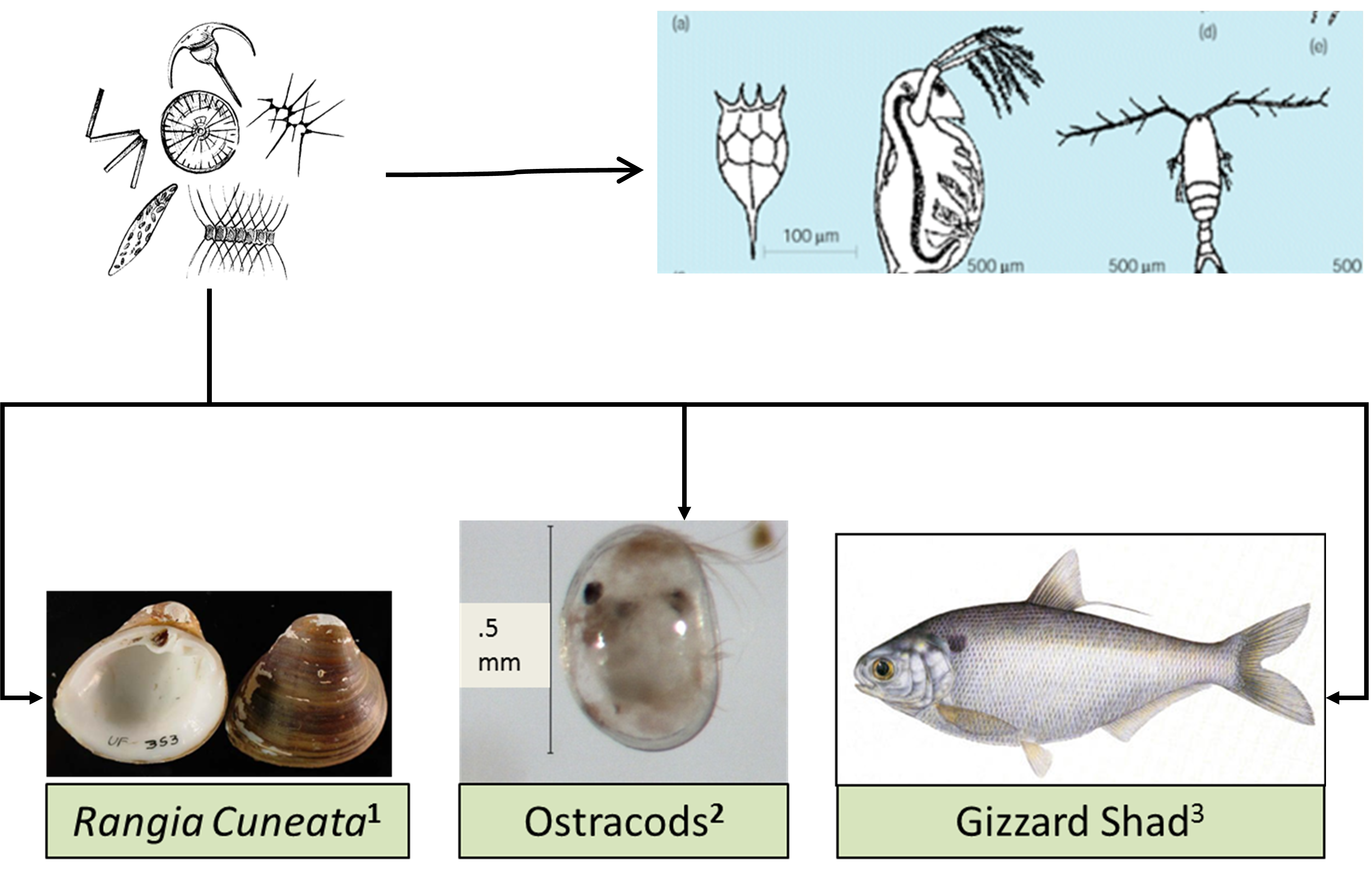James River Ecosystem Study
 As I began studying the James River I was particularly intrigued by the persistently high chlorophyll levels occurring in the tidal freshwater zone (which are the highest in the James River Estuary and among the highest throughout Chesapeake Bay; see map). I found that the location of the chlorophyll maximum was linked to a change in channel morphometry whereby shallower depths partially released phytoplankton from light limitation, and coupled with longer water residence, allowed them to more efficiently utilize available nutrients (Bukaveckas et al. 2011; Estuaries & Coasts). What further interests me about the James is that it has a large base of primary production, and high levels of fecundity among apex predators (eagles, osprey and fish), but we have little understanding of how energy gets from the bottom to the top. Given the low levels of zooplankton grazing that we have documented, I hypothesize that the primary consumers are either filter-feeding fishes (shad, menhaden) or that the bulk of phytoplankton production enters the benthic food chain (figure below).
As I began studying the James River I was particularly intrigued by the persistently high chlorophyll levels occurring in the tidal freshwater zone (which are the highest in the James River Estuary and among the highest throughout Chesapeake Bay; see map). I found that the location of the chlorophyll maximum was linked to a change in channel morphometry whereby shallower depths partially released phytoplankton from light limitation, and coupled with longer water residence, allowed them to more efficiently utilize available nutrients (Bukaveckas et al. 2011; Estuaries & Coasts). What further interests me about the James is that it has a large base of primary production, and high levels of fecundity among apex predators (eagles, osprey and fish), but we have little understanding of how energy gets from the bottom to the top. Given the low levels of zooplankton grazing that we have documented, I hypothesize that the primary consumers are either filter-feeding fishes (shad, menhaden) or that the bulk of phytoplankton production enters the benthic food chain (figure below).
 This has led to new interests in measuring sedimentation and grazing by benthic and pelagic consumers. I hope to have a forthcoming paper on the role of phytoplankton in retaining nutrients within the tidal-fresh segment (Bukaveckas & Isenberg, Estuaries & Coasts, in review). With my current PhD student, we have recently completed an intensive field season for the James River Algal Blooms Study. We performed algal bioassay experiments to measure forms and rates of nutrient uptake, filtration experiments to do determine grazing rates by wedge clams (Rangia) and an analysis of chlorophyll and algal toxins in the gut contents of fishes.
This has led to new interests in measuring sedimentation and grazing by benthic and pelagic consumers. I hope to have a forthcoming paper on the role of phytoplankton in retaining nutrients within the tidal-fresh segment (Bukaveckas & Isenberg, Estuaries & Coasts, in review). With my current PhD student, we have recently completed an intensive field season for the James River Algal Blooms Study. We performed algal bioassay experiments to measure forms and rates of nutrient uptake, filtration experiments to do determine grazing rates by wedge clams (Rangia) and an analysis of chlorophyll and algal toxins in the gut contents of fishes.